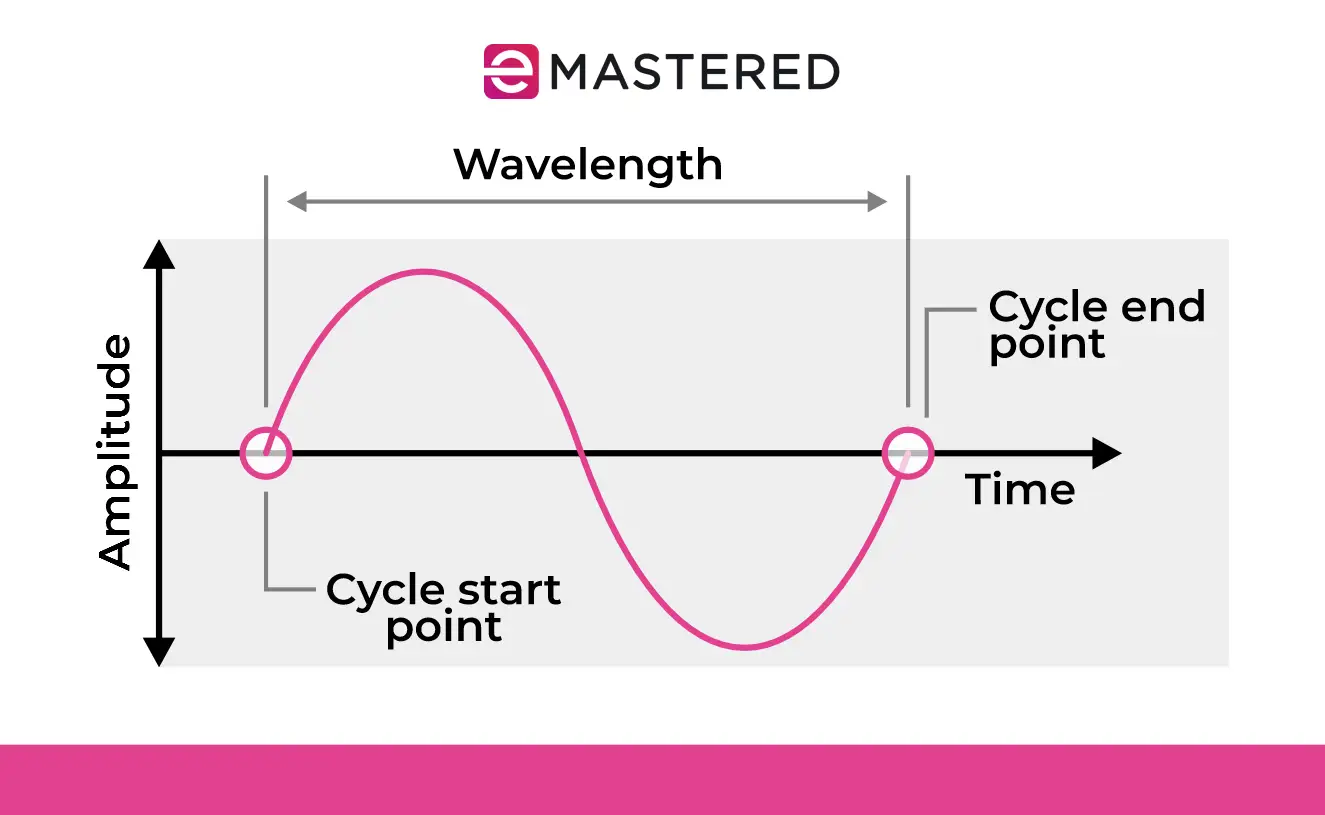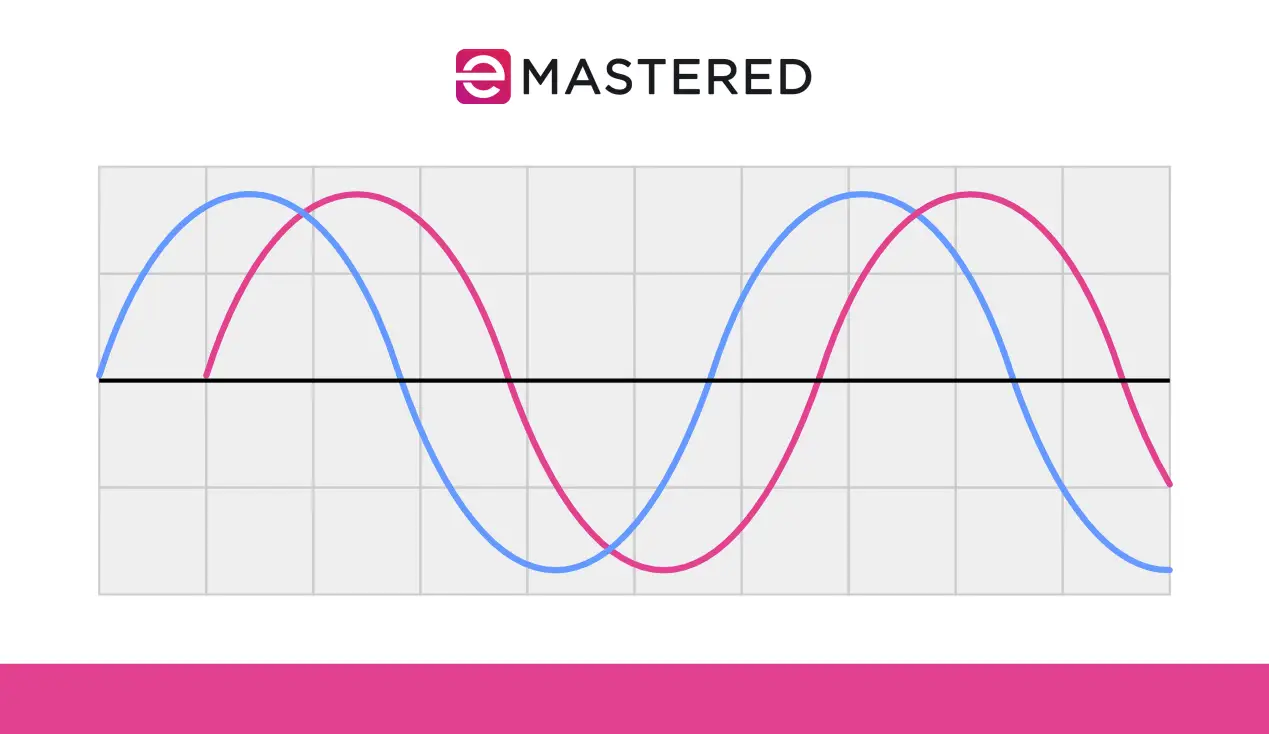When most people hear the word wave , they picture the ocean - rolling swells, crashing surf, maybe even a surfer wiping out in spectacular fashion. But in the world of music and sound, waves work a little differently.
That's not to say that ocean waves and sound waves don't have a lot in common. Both of them move through space, carry energy, and can be measured in terms of their size and speed.
Of course, the big difference is that ocean waves travel through water, while sound waves move through the air (or whatever material they happen to be passing through). And while ocean waves make their movement easy to see, sound waves are a little more complex, working in the microscopic realm.
Knowing how these waves behave can be incredibly beneficial for anyone working with sound, whether you're an audio engineer, studio builder, or acoustic treatment developer. So let’s break it all down in the simplest way possible!
What is a Sound Wave?
At its core, a sound wave is just a vibration moving through the air (or water, or a solid. Sound isn’t picky). It’s the reason we hear everything from music to voices to things going bump in the night!
We describe sound waves based on a few key traits, including how fast they’re moving (frequency), how big they are (amplitude), and how they change over time. But before we get into all that, it's important to understand that sound waves are a special kind of wave called longitudinal waves .
Unlike ocean waves, which move up and down while traveling forward, a longitudinal wave pushes and pulls the air in the same direction it's traveling.
To imagine the way a longitudinal wave works, think of a long line of people all standing shoulder to shoulder. If the first person leans forward and bumps into the next, and that person does the same to the next, you get a chain reaction, just like air molecules reacting to a sound. This back-and-forth motion is why sound is often called a pressure wave .
Now, when we talk about sound waves in music and everyday life, we’re really talking about sound pressure waves . These sound waves land within the range of human hearing, which is roughly 20 Hz to 20,000 Hz. Below sounds perceived by the human ear is the infrasound range, which is too low for us to hear but is useful for things like detecting earthquakes and tracking elephants (yup, you read that right). Above the range of the human ear is ultrasound , which we use for everything from medical imaging to cleaning jewelry. We’ll come back to those in a bit.
Beyond music, there are several industries in which sound waves play a big role. They do everything from helping doctors see inside the human body to allowing submarines to navigate underwater. But for us as musicians and producers, these waves are the foundation of everything we work with, and the better we understand them, the more control we have over our sound.
What are the Components of a Sound Wave?

Sound waves might seem like dark magic, but just like anything else in physics, they follow a set of rules. Every sound we hear has specific traits that define how it behaves, and there are a handful of key components that shape the sound waves.
Frequency
Frequency is one of the biggest factors that shape how we hear sound. In simple terms, it’s how fast a sound wave is vibrating. We measure it in hertz (Hz), which tells us how many times the wave cycles in one second.
The faster the vibration, the higher the frequency. And frequency is what determines pitch . For example, a middle C on a piano has a frequency of about 261.6 Hz, meaning the air is vibrating at that speed per second to produce the note. Meanwhile, a low bass note might sit around 60 Hz, and a piercing dog whistle can soar above 20,000 Hz (which, conveniently, is where human hearing taps out).
Wavelength
Wavelength (λ) is the size of a sound wave - specifically, how far it travels in one complete cycle. If you froze a sound wave and stretched it out in front of you, the wavelength would be the distance from one peak to the next.
There’s a simple formula to figure this out:
λ=c/f
Here’s what that means:
- λ (Wavelength): The length of one full cycle of the wave
- c (Speed of Sound): How fast sound is moving through the air (roughly 343 meters per second at room temperature)
- f (Frequency): How fast the wave is vibrating, measured in hertz
So, if you have a 100 Hz sound, you can plug it in:
λ = 343/100 = 3.43 meters
That means the wave is over 3 meters long!
Now, if we compare that to a 1,000 Hz sound:
λ = 343/1000 = 0.343 meters
As you can see, higher frequencies have shorter wavelengths, which is why bass (low frequencies) feels big and wide, while treble (high frequencies) is more focused and directional.
This is also why low-end sounds can travel through walls, while higher-pitched sounds tend to get absorbed or reflected more easily.
Amplitude
Amplitude represents the power or volume of a sound. It’s the part of a sound wave that makes it loud or soft. More technically, it represents how far air particles get pushed from their resting position when a sound wave passes through. The bigger the movement, the stronger the wave, and the louder the sound.
Think of it like this: if you gently tap a drum, the air barely moves, and you get a quiet sound. But if you smack that drum with force, the air compresses and expands much more dramatically, creating louder sounds.
That’s amplitude in action.
In a waveform, amplitude is the height of the wave. Taller waves mean higher amplitude, which we perceive as more volume. Smaller waves mean lower amplitude, which we hear as a quieter sound.
Beyond volume, however, amplitude also plays a role in how sound interacts with space, how it feels physically, and even how it’s perceived emotionally in music.
Speed
When we talk about the speed of sound (and not arguably one of Coldplay's best songs), it's how fast sound waves travel through a medium. Unlike light, which zips through space at speeds that are difficult to fathom, sound needs something to travel through. This could be air, water, metal, you name it. And depending on what that something is, the speed of sound changes.
In air (at room temperature), sound moves at around 343 meters per second (1,125 feet per second) . But if you shout underwater, the sound travels four times faster than it does in air. And if you tap on a metal pipe, the vibration shoots through the metal even faster.
So, why does this happen?
It comes down to how tightly packed the molecules are in different materials. In gases like air, molecules are pretty spread out, so it takes longer for the wave to pass through. In liquids, molecules are closer together, so sound moves faster. In solids, where molecules are packed tightly, sound moves the fastest.
That’s why if you put your ear against a train track (I don't recommend this), you’ll hear an oncoming train long before the sound reaches you through the air. It’s also why sound behaves differently in different environments, like how your voice sounds weirdly muffled in a thick fog, as the extra moisture in the air is changing the speed and absorption of sound waves).
Intensity
If amplitude tells us how big a sound wave is, intensity tells us how strong it is. More specifically, intensity is the amount of power a sound wave carries per unit area, and we measure it in watts per square meter (W/m²) .
Think of it like a flashlight. A dim flashlight spreads a small amount of energy over an area, while a high-powered one blasts a ton of light in the same space. Sound works the same way. The more energy packed into a wave, the more intense it is.
Intensity matters because it plays a huge role in how we perceive loudness. While amplitude gives us the height of the wave, intensity tells us how much total energy is being delivered. A tiny speaker and a stadium sound system might both produce the same amplitude at a single point, but the stadium system is spreading that power over a much larger area, making it far more intense.
This is also why distance affects how loud something sounds. As a sound wave spreads out, its intensity drops because the energy gets distributed over a larger space. That’s why a concert sounds deafening near the speakers but fades the farther back you go.
Phase

Phase looks at the timing of a wave. It's where a sound wave is in its cycle at any given moment. If you could freeze a waveform and point to a specific spot on it, you’d be identifying its phase.
We measure phase in degrees , with one complete wave cycle being 360° . A wave at 0° or 360° is at its starting point, while 180° means it’s halfway through and has flipped upside down.
When multiple sound waves interact, their phases determine whether they work together or against each other.
If two identical waves are in phase (lined up at the same points), they reinforce each other, making the sound stronger . However, if they’re out of phase, meaning one wave’s peak lines up with another’s dip, they partially or completely cancel out, which can reduce or even eliminate the sound.
Phase cancellation is the bane of any audio engineer. For instance, if you’ve ever recorded a drum kit and noticed the snare sounds weirdly thin, phase cancellation between microphones could be the culprit. It’s also why flipping the phase on a mixer or DAW can sometimes bring a sound back to life .
We have a whole blog on why phase is important in music that I recommend checking out if you want to learn more.
Different Types of Sound Waves Based on Propagation
It's important to note that not all sound waves move the same way. While they all carry energy through a medium, the way they propagate (fancy term for how sound waves travel) can be different depending on the situation.
Propagation is just the way a wave moves through space. Some waves push and pull in the same direction they’re traveling, while others move up and down or spread out in complex patterns.
Let's break down the main types of sound waves based on how they move and why that matters.
Longitudinal Waves
Longitudinal waves are the go-to format for sound waves in everyday life. They’re defined by how they move. Air particles vibrate back and forth in the same direction as the wave is traveling.
I like to imagine pushing one end of a slinky forward while pulling it back, and seeing the coils bunch up and spread out in certain sections. Essentially, longitudinal waves move through areas of compression (where particles are pushed together) and rarefaction (where particles spread apart). This constant cycle of push and pull is how sound moves through the air and reaches our ears.
We hear longitudinal waves in air and water since those materials don’t have the structure to support other types of wave movement. But they also travel through solids.
Since these waves are responsible for almost all the sound we hear, they’re at the heart of everything in music, from the vibration of a guitar string to the crispy tap of a hi-hat.
Transverse Waves
Transverse waves move a little differently than their longitudinal cousins. Instead of particles vibrating back and forth in the same direction as the wave, transverse waves feature motion that’s perpendicular to the wave’s travel path, meaning the energy moves forward, but the particles move up and down.
A good way to picture this is by shaking a rope. If you hold one end and flick it up and down, you’ll see waves traveling along the rope, but the actual material of the rope moves side to side rather than along the length of the wave. That’s how transverse waves behave.
The key difference is that transverse waves only occur in solids. That’s because solids have the necessary rigid structure to support the up-and-down motion. Liquids and gases don’t have that kind of internal resistance.
Even though they’re not part of how we hear sound, transverse waves play a huge role in understanding the mechanical properties of materials in the world around us. They show up in seismic activity, vibrations in solid structures, and even how instruments resonate. If you've ever felt the body of an acoustic guitar vibrate when you play a note, you're experiencing transverse waves in action.
Surface Waves
Surface waves are like the best of both worlds, combining the elements of both longitudinal and transverse waves. Instead of moving purely back-and-forth or up-and-down, surface waves create a more circular or rolling motion as they travel along the boundary between two different materials.
Bringing it back to ocean waves , when a wave rolls toward shore, the water moves in a looping pattern. Particles near the surface travel in bigger circles, while those deeper down move less. The same principle applies to surface waves in other materials, including some cases where sound interacts with solid surfaces.
The key thing about surface waves is that their energy fades with depth. The farther you go from the surface, the smaller the wave's movement becomes. This is why deep-sea divers don’t feel the same motion that’s tossing boats around up top.
Different Types of Sound Waves Based on Frequency
Some sound waves we can hear, while others are completely out of our range. Based on frequency, sound waves fall into three main categories:
- Audible Sound Waves: These are the frequencies humans can actually hear. Everything from 20 Hz to 20 kHz falls into this range. As we age, the upper limit tends to drop, which is why some high-frequency sounds are only heard by younger ears (you probably remember your classmates playing those annoying mosquito apps in class because the teacher couldn't hear them)
- Infrasound: These are ultra-low frequencies below 20Hz that are too deep for human hearing, but they’re still very real and powerful. Infrasound is used in earthquake detection, volcanic activity monitoring, and even animal communication. Elephants, for example, use infrasound to "talk" over long distances. Some researchers even link infrasound to feelings of unease, which could explain those “I swear I just saw a ghost” moments.
- Ultrasound: These high-frequency sound waves above 20kHz are beyond what humans can hear, but they have tons of practical applications. Medical imaging (ultrasound scans), sonar technology, and even some pest deterrents rely on ultrasound. Some animals, such as bats and dolphins, use it for echolocation to "see" in ways that are beyond our perception.
Final Thoughts on Sound Waves
So, what can you do with all this newfound information on sound waves?
Well, for starters, understanding sound waves gives you more control over your music production, mixing, recording, and even live sound setups. Whether you’re adjusting an EQ and trying to figure out the frequency of the waves you're hearing or placing mics and trying to avoid phase, knowing how sound moves helps you make better choices.
Want a fun sound waves experiment?
Try this: grab a speaker, play a low-frequency sine wave (around 50-100 Hz), and put your hand near it. Feel that vibration? Now, play a high-frequency sine wave (5,000 Hz or more). Notice how the vibrations fade? That’s wavelength and frequency in action. The lower the frequency, the longer the wavelength, and the more it moves through the air in a way you can physically feel .
At the end of the day, sound waves aren’t just part of some abstract science. They shape everything we hear and feel in music. And the more you understand them, the more you can bend them to your will.





